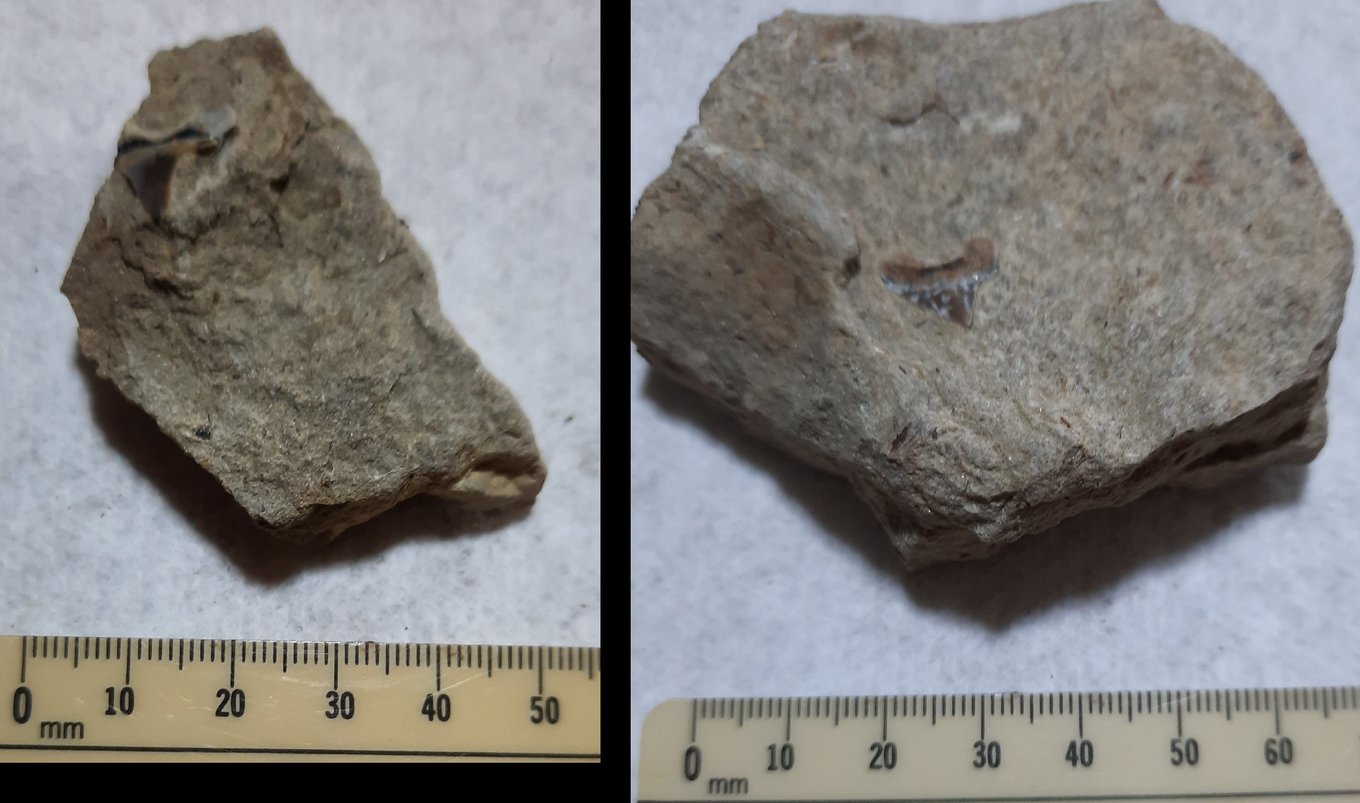I made a drive to explore a new creek in Hill County Friday morning. It ended up being some of the toughest hiking in a creek bottom I’ve done. This is another Eagle Ford outcrop, and in satellite photos, the blue-gray shale went from the sides of the creek walls all the way to the bottom of the creek bed, just like the Ellis County creek I visited last week. In real life on Friday, the creek bed was full of mud, and it covered much of the lower walls of the creek too. I’ve never seen such a difference in a reasonably recent satellite photo and actual appearance.
To make matters worse, it rained Thursday. I didn’t think the showers had reached that far west, but I was mistaken. It didn’t raise the water too much, but it made the creek bottom a muddy mess. I’ve never before gotten this muddy hiking a creek, and it really wore me down, slogging through that.
With the mud that high, there was no finding any fossiliferous layers of matrix anywhere in the creek walls, but there were plenty of broken pieces of it, along with shale pieces, in the bottom of the creek. So, I spent my time looking for individual fossils on the gravel bars (more like mud bars). But the rain had turned the shale really dark, and that along with the dark brown mud, made spotting fossils really tough. I picked up lots of likely looking pieces of matrix too, and I did find a few things.
Here are the only teeth I found that weren’t seriously encased in matrix. I really should stop picking up modern bison teeth, but can never seem to resist them. Click the photos to be able to zoom in and get a closer look.

Here are all but one of the other teeth I found. They are buried in matrix, and it’s not matrix that softened at all after two days in water. I’m trying vinegar now. It may come down to just using a dental pick to retrieve what I can see on the surface of these matrix pieces.



There were lots of small ammonite imprints in matrix, but I never found any intact ammonites. The one in the matrix on the right looks like there’s still shell left.

I had no idea what this was. Experts in The Fossil Forum identified it as part of the hinge from an Inoceramid.


Just before time to leave, I spotted this.

And here it is out of the matrix. It looks like a Cretodus Crassidens.





